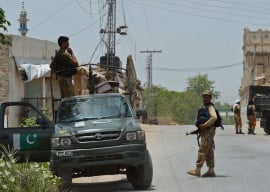
Erbil — one of the oldest continuously habitated cities in the world, now in its 5th millennium — boasts modern construction all around it, but its heart is ancient. A citadel that sits on top of a hill is surrounded by a network of roads where bakers bake and traders trade the same way as they have done for centuries.

(Clockwise from top) Supporters of the KDP party wave flags at the foot of the ancient citadel. The Hamilton road cuts its way through the deep Gali Ali Baig. Iraq produces roughtly 12,000 metric tons of table olives per year and eats about 30,000 metric tons, importing, mostly from Turkey and Syria. The traditional Jli Kurdi or Kurdish attire for men.
People here are some of the friendliest you’ll meet — from the money changers who literally sit on the pavements with their bundles of notes and without any security, to the little kids running up to you pointing at your camera, and asking “Sahaafi?”
They speak candidly. An elderly man in a tea house says to me: “We love what America did to Saddam. But we hate what it did to Baghdad.”

(From the top, clockwise) Taking an afternoon break on a bench in the centre of Erbil, Iraq’s fourth largest city by most standards. A tank from Saddam Hussain’s dreaded army rusts in peace. The Iraqi tea house is where elders meet to gossip and play board games. Iraqi tea is often made with liberal amounts of cardamom and sugar. A rest stop pavilion by the Bekhal waterfall on the magnificent Hamilton road that links Iraq with neighbouring Iran.
The Kurds are battle-hardened folks, who are proud of their heritage. “Saladin, the hero of Islam, was a Kurd!” points out my guide Sardar as he speeds into the town named after the conqueror of Jerusalem. Even today, the Kurd soldier is called a Peshmarga, translated as ‘The one who faces death.’
We zoom up Hamilton Road, a magnificent highway carved through the mountains by a New Zealand engineer, and one that links Iraq and Iran. We cut through deep canyons, eat kebabs next to raging waterfalls, all the way to the Iran border where there are lush hills, shepherds and the odd oil tanker.

(From the top, clockwise) Shepherds have been grazing sheep in these lush hills near the Iran border for millenia.
This doesn’t feel like a war zone (except for a rusty tank left as a reminder). This is lovely. This is ancient Mesopotamia, thriving in the modern world.
Published in The Express Tribune, Sunday Magazine, July 14th, 2013.
Like Express Tribune Magazine on Facebook, follow @ETribuneMag on Twitter to stay informed and join the conversation.
COMMENTS (3)
Comments are moderated and generally will be posted if they are on-topic and not abusive.
For more information, please see our Comments FAQ



















1713889672-1/Plastic-waste-(2)1713889672-1-270x192.webp)























Great Job
Nice pictures and you have managed to capture the atmosphere and the peoples attitude. Reminded me a bit of Basra some 35 years ago, the people appeared content while going about their daily lives.